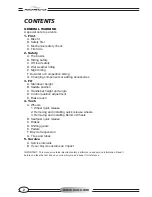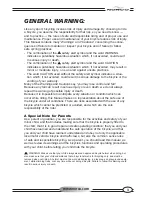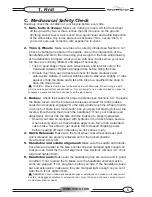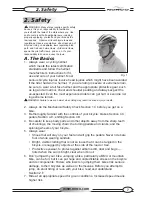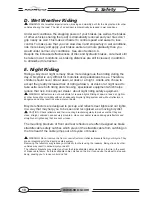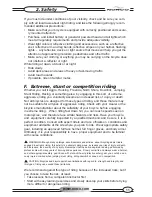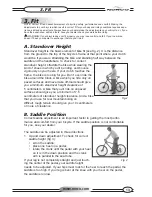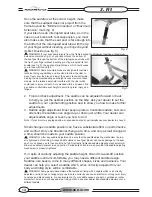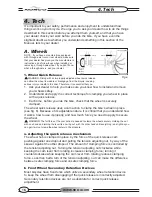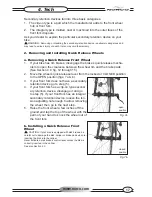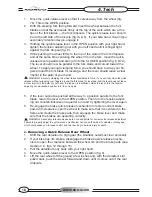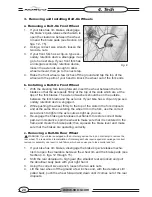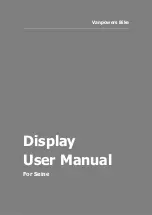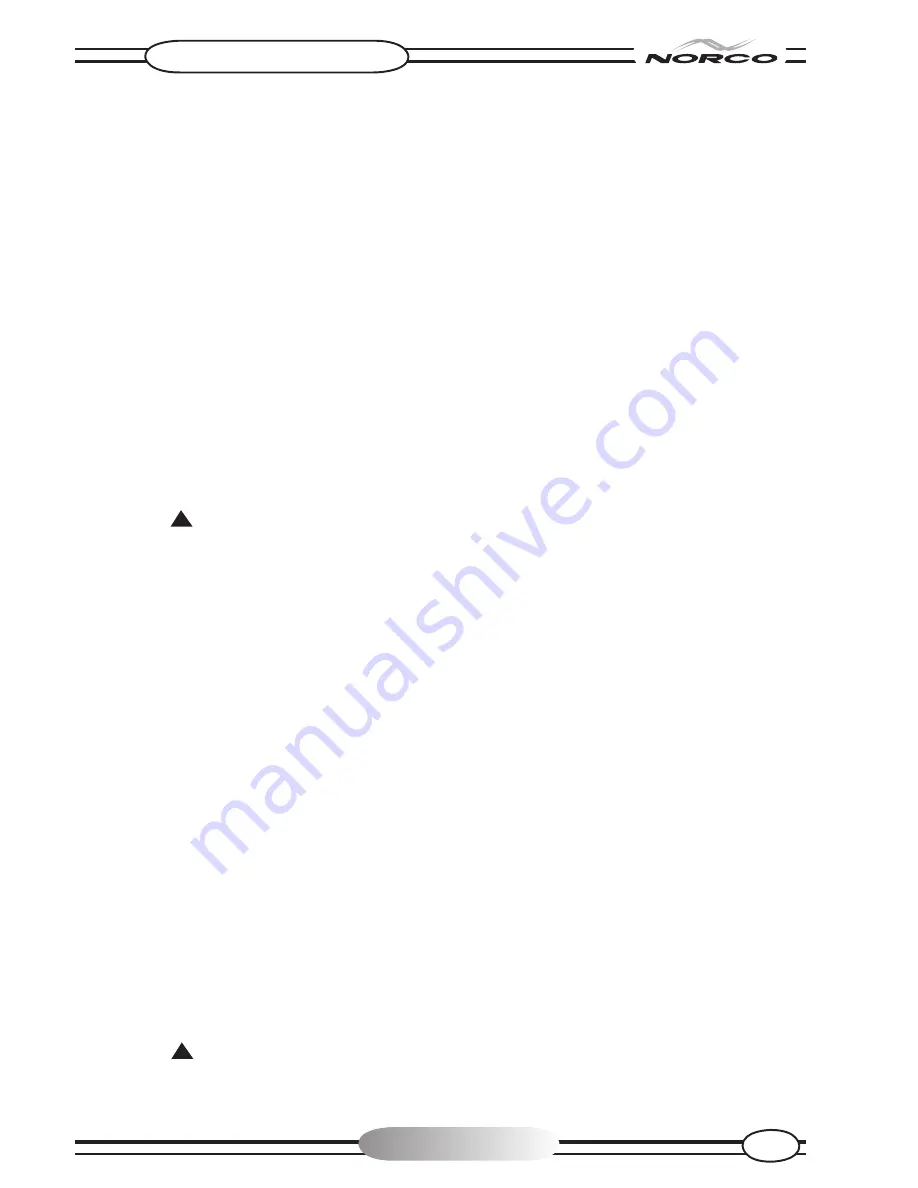
www.norco.com
5
C. Mechanical Safety Check
Routinely check the condition of your bicycle before every ride.
1. Nuts, bolts & straps:
Make sure nothing is loose. Lift the front wheel
off the ground by two or three inches then let it bounce on the ground.
Anything sound, feel or look loose? Do a quick visual and tactile inspection
of the whole bike. Any loose parts or accessories? If so, secure them. If
you’re not sure, ask someone with experience to check.
2. Tires & Wheels
: Make sure tires are correctly inflated see Section 4.G.1
Check by putting one hand on the saddle, one on the intersection of the
handlebars and stem, then bouncing your weight on the bike while looking
at tire deflection. Compare what you see with how it looks when you know
the tires are correctly inflated; and adjust if necessary.
• Tires in good shape? Spin each wheel slowly and look for cuts in the
tread and sidewall. Replace damaged tires before riding the bike.
• Wheels true? Spin each wheel and check for brake clearance and
side-to-side wobble. If a wheel wobbles side to side even slightly, or rubs
against or hits the brake pads, take the bike to a qualified bike shop to
have the wheel trued.
CAUTION: Wheels must be true for the brakes to work effectively. Wheel truing is a skill
which requires special tools and experience. Do not attempt to true a wheel unless you have the
knowledge, experience and tools needed to do the job correctly.
3. Brakes:
Check the brakes for proper operation see Sections 4.C. Squeeze
the brake levers. Are the brake quick-releases closed? All control cables
seated and securely engaged? Do the brake pads touch the wheel rim with-
in an inch of brake lever movement? Can you apply full braking force at the
levers without having them touch the handlebar? If not, your brakes need
adjustment. Do not ride the bike until the brakes are properly adjusted.
• Should your bike be equipped with hydraulic rim or disc brakes, beware
when slowing down, as these brakes apply more force than a standard
cable brake. Take time to get used to this increased stopping power
before heading off road, otherwise you risk serious injury.
4. Quick Releases:
Make sure the front wheel, rear wheel and seat post
quick releases are properly adjusted and in the locked position.
See Section 4.A & 4.B.
5. Handlebar and saddle alignment:
Make sure the saddle and handle-
bar stem are parallel to the bike’s center line and clamped tight enough so
that you can’t twist them out of alignment. See Sections 3.B and 3.C. If not,
align and tighten them.
6. Handlebar ends:
Make sure the handlebar grips are secure and in good
condition. If not, replace them. Make sure the handlebar ends and exten-
sions are plugged. If not, plug them before you ride. If the handlebars have
bar end extensions, make sure they are clamped tight enough so you can’t
twist them. If not, tighten them.
WARNING: Loose or damaged handlebar grips or extensions can cause you to lose control
and fall. Unplugged handlebars or extensions can cut your body, and can cause serious injury in
an otherwise minor accident.
1. First
Summary of Contents for multi-speed bicycles
Page 1: ...for multi speed bicycles 7th Edition www norco com ...
Page 2: ......




